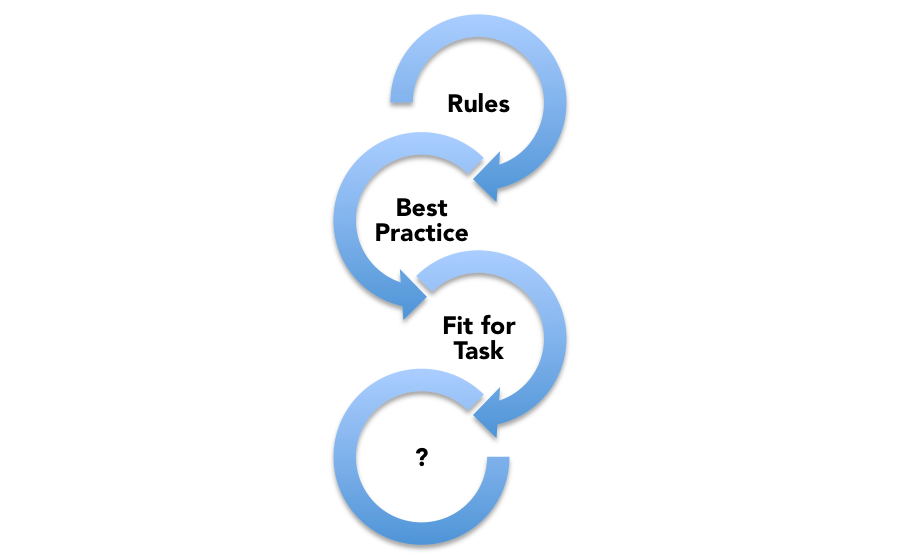The Canyoneering Competence Continuum
Part 1: A frame of reference to understand canyoneering practices, and where a particular practice falls in the spectrum of Learning, Knowing and Understanding.
During the latest Canyon Guides International instruction and assessment event in British Columbia Canada (September 2025), The Canyoneering Competence Continuum took a very relevant role to frame discussions about ropework standards and techniques for canyoneering.
The Competence Continuum became a handy frame of reference to understand things like:
Why sometimes is OK not to use belays while rappelling, or…
Why sometimes is OK to not to put stopper knots at the end of ropes, or…
Sometimes not to have 2 points of contact, or…
Sometimes is OK to clip to a non redundant anchor, and…
Many other “rules” or “best practices” that are shared, formally or informally, but out of context.
Original Post
One of my favorite posts from Rich Carlson (Master Instructor at Canyon Guides International) - The Competence Continuum in Canyoneering.
For people entering canyoneering, picking up techniques from online sources, is hard to discern if what is being shared is a:
Rule,
Best Practice
Fit for Task Technique
People coming from other rope based activities like rock climbing, mountaineering, caving, arborists, rope access, also may find that their rules or best practices, do not apply to canyoneering.
Original Canyoneering Competence Continuum post:
The competency continuum. People enter canyoneering at different places along the continuum. Some have no rope experience at all. Some have no outdoor experience at all. Some come from rock climbing and have an established skill set and, quite often, some misinformation and/or an initial inability to perceive how canyoneering techniques necessarily differ from rock climbing techniques in many ways.
Others progress on the continuum in one type of canyon, but not in other types.
Skills can be acquired by many different means, including formal and informal training. Skills need to be combined with judgment, which comes from the result of experience. There is a saying about good judgment coming from experiences that came about due to bad judgment. It is very common in the canyoneering community for someone to have experience, yet still lack competence because luck has been on their side and they haven't perceived a need to expand their skills.
Rules vs Best Practice vs Fit for Task. When someone is still low on the competency continuum, it makes sense to start them out with some rules on how to do things. We should also impress upon them the wisdom of sticking to basic canyons as they master basic skills, then progress from there.
At some point everyone needs to learn what constitutes best practice AND the variables that come into play. In other words, it becomes ok for them to start breaking rules and deviating from best practices IF they have developed the judgment they need to go along with it. Even then, I would argue that we should employ best practices whenever possible because we don't know who will come behind us, see what we left behind and assume it is an example of best practice.
Fit for task means we are breaking rules and deviating from best practices, hopefully only because we know what the hell we are doing. I would still argue that we need to consider others who haven't achieved the same level of competence. -- Rich Carlson (2018 in Art of Ropework FB group)
Next: Part 2 The Canyoneering Cycle of Progression
Form Learning to Knowing to Understanding and beyond…



